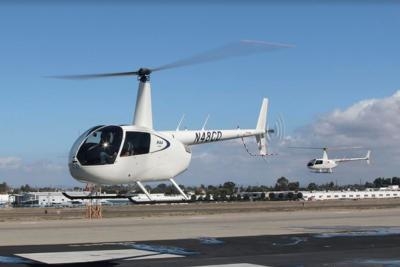Thu, Dec 01, 2016
Accident Analysis Finds High Incidence Of LOC Due To Missed Checklist Items
The FAA has published a Safety Alert For Operators (SAFO) emphasizing the importance of utilizing checklists and specifically performing stabilized hover checks before departure.

A review of helicopter incidents and accidents over the past five years has identified several accidents where a loss-of-control (LOC) was encountered immediately after liftoff while light on the skids/gear, or from other issues caused by missed checklist items.
Helicopters have the unique ability to takeoff and land nearly anywhere. While this is among the helicopter’s greatest attributes, it also can create scenarios leaving little room for error. Several recent helicopter accidents have occurred as a result of pilots not bringing the helicopter to a stabilized hover before initiating takeoff. Rather, pilots elected to immediately and rapidly takeoff from the ground. In some cases, this has led to a LOC where the result was either an incident, or an accident resulting in significant damage to the helicopter and/or fatalities to those onboard.
Post-accident analysis indicated that the accident sequence began with indications that were evident when the helicopter was light on the skids, yet the pilot elected not to abort the takeoff by reducing collective. Instead, the pilot continued pulling in collective (or continued manipulating the controls) resulting in a complete LOC. In many of these accidents, the helicopter was not properly configured for flight, either because a checklist item was missed, or because a checklist was not used at all by the pilot.
In other instances, pilots have attempted to perform either maximum performance or confined area takeoffs without completing a hover power and systems check. One accident resulted from a pilot attempting a takeoff from the surface without completing a hover power check. As the aircraft lifted from a rooftop helipad and over the edge of the rooftop, the aircraft lost altitude and crashed into a parking lot below. It was discovered that one of the two engines was in the “fly” position but the other engine was still in the idle position. If a hover check was performed before takeoff, this accident could have been prevented.
The FAA recommends that pilots perform the following during the takeoff sequence:
- Always ensure the area you are taking off from is sufficient for the conditions and the capabilities of the aircraft, as well as free and clear of debris that could pose a hazard to an aircraft.
- Using strict discipline and without compromise, pilots should ALWAYS USE an APPROPRIATE CHECKLIST to ensure the helicopter is properly configured for takeoff.
- Unless prohibited by environmental conditions such as the possibility of whiteout, brownout, etc., always perform a hover check prior to takeoff. If a takeoff from the surface is required, perform the hover check, land, and then depart from the surface, taking the aircraft’s performance into consideration.
- When performing a vertical takeoff, raise the helicopter vertically from the surface to a normal hovering altitude (2 to 3 feet) with minimal lateral or longitudinal movement maintaining a constant heading. If at any time during initial collective pull the helicopter does not appear to be stabilized, ABORT the takeoff by smoothly reducing the collective.
- Review the FAA Helicopter Flying Handbook, Chapter 9, Vertical Takeoff to a Hover and Chapter 10, Advanced Flight Maneuvers.
More News
Terminal Radar Service Area Airspace surrounding designated airports wherein ATC provides radar vectoring, sequencing, and separation on a full-time basis for all IFR and participa>[...]
Very High Frequency (VHF) The frequency band between 30 and 300 MHz. Portions of this band, 108 to 118 MHz, are used for certain NAVAIDs; 118 to 136 MHz are used for civil air/grou>[...]
“From approximately November 2021 through January 2022, Britton-Harr, acting on behalf of AeroVanti, entered into lease-purchase agreements for five Piaggio-manufactured airc>[...]
Also: Virtual FLRAA Prototype, IFR-Capable Autonomous A/C, NS-32 Crew, Golden Dome Missile Defense Bombardier announced that the first production Global 8000 successfully completed>[...]
Aero Linx: The 1-26 Association (Schweizer) The Association’s goal is to foster the helpfulness, the camaraderie, and the opportunity for head-to-head competition that is fou>[...]
 ANN's Daily Aero-Term (05.29.25): Terminal Radar Service Area
ANN's Daily Aero-Term (05.29.25): Terminal Radar Service Area ANN's Daily Aero-Term (05.30.25): Very High Frequency (VHF)
ANN's Daily Aero-Term (05.30.25): Very High Frequency (VHF) Aero-News: Quote of the Day (05.30.25)
Aero-News: Quote of the Day (05.30.25) Airborne 05.23.25: Global 8000, Qatar B747 Accepted, Aviation Merit Badge
Airborne 05.23.25: Global 8000, Qatar B747 Accepted, Aviation Merit Badge ANN's Daily Aero-Linx (05.30.25)
ANN's Daily Aero-Linx (05.30.25)



